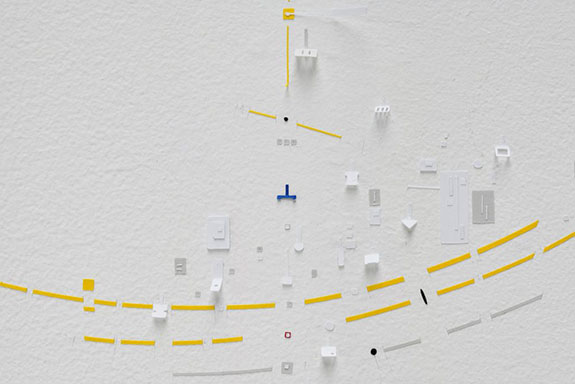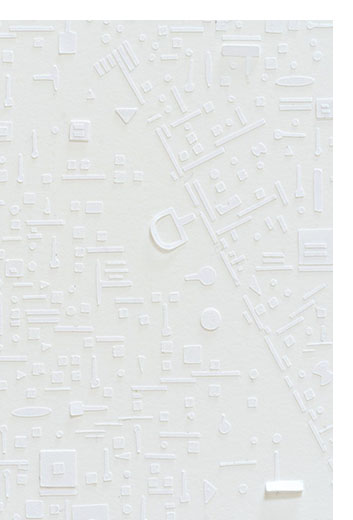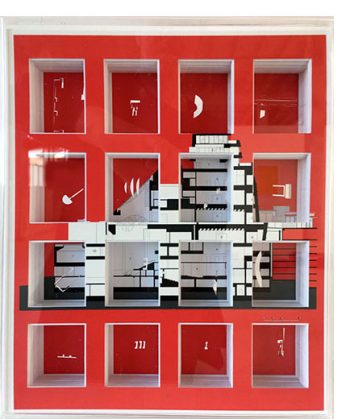by Mark Van Proyen

I have never seen an exhibition that was so perfectly matched to the space that hosted it. I am referring to Supra Muro, Marco Maggi’s show at the Hosfelt Gallery, a space whose large windows and skylights allow a flood of bright Indian summer sunshine to cascade into its maze of interconnected rooms. Maggi is a well-known artist who splits his time between Montevideo and New Paltz, New York, and who garnered international attention for his memorable show at the Uruguay Pavilion at the 2015 Venice Biennial. A video of that event, screened at this gallery in 2017, showed viewers staring intently at what appeared to be blank walls.
The delightful hide-and-seek aspect of that exhibition carries over into this one, in that many of the works are often hiding in plain sight. In most cases, the works are almost miniscule, and none (except in the exhibition checklist) are identified by titles or even numbers affixed to walls, which has the effect of keeping viewers off balance in terms of whether to presume that Maggi’s 
There are 33 works in Maggi’s exhibition (all dated 2018), and they can be broken down into about 10 different groups, which means that a description only a fraction of them can contained in the space of this review. Corner Syllable seems, at first glance, to be a cantilevered paint chip affixed to two intersecting walls. Closer inspection shows that it is in fact a complex collage made from several precisely cut shapes of white paper, suggesting a snowflake made by a poorly programed computer or, more accurately, an Exacto knife savant. In a nearby work, Sentence, we see a sequence of these cut paper configurations, while in another, Floor Syllable, yellow paper spread out on the gallery’s floor does pretty much the same thing.
Gold is the New White, a grid of 600 35-mm slide mounts set in a frame, operates as a platform for tiny, slightly protruding cut paper sculptures. Spelling: R-e-c-t-a-n-g-l-e, Sliding Series repeats the same strategy in a cooler color. In Drawing Machine (Horizontal Line), a taut bow string holds the point of a pencil against a wall, poised to mar the white surface. In Thesis on
The refreshing thing about Maggi’s exhibition lies in how it tilts and transforms what might be called the architectonics of viewing. The gallery space may be the edifice extraordinaire of Cartesian space, but Maggi’s work achieves its effect by unraveling the certitude of the gallery’s X, Y and Z coordinates to show a kind of post-Cartesian unraveling and re-consolidation of spatial signifiers that play to the surrealist inspired imagination of alternate universes rather than the pragmatically scripted presumptions about the relation between architectural and bodily physicality. Being that Maggi is from Uruguay, it seems fair to suggest that his point of artistic departure would be the influential Brazilian Constructivist movement led by the likes of Lygia Clark, Hélio Oiticica and 
# # #
Marco Maggi: “Supra Mundi” @ Hosfelt Gallery through October 6, 2018.
About the Author:
Mark Van Proyen’s visual work and written commentaries focus on satirizing the tragic consequences of blind faith placed in economies of narcissistic reward. Since 2003, he has been a corresponding editor for Art in America. His recent publications include: Facing Innocence: The Art of Gottfried Helnwein (2011) and Cirian Logic and the Painting of Preconstruction (2010). To learn more about Mark Van Proyen, read Alex Mak's December 9, 2014 interview, published on Broke Ass Stuart's Goddamn Website.